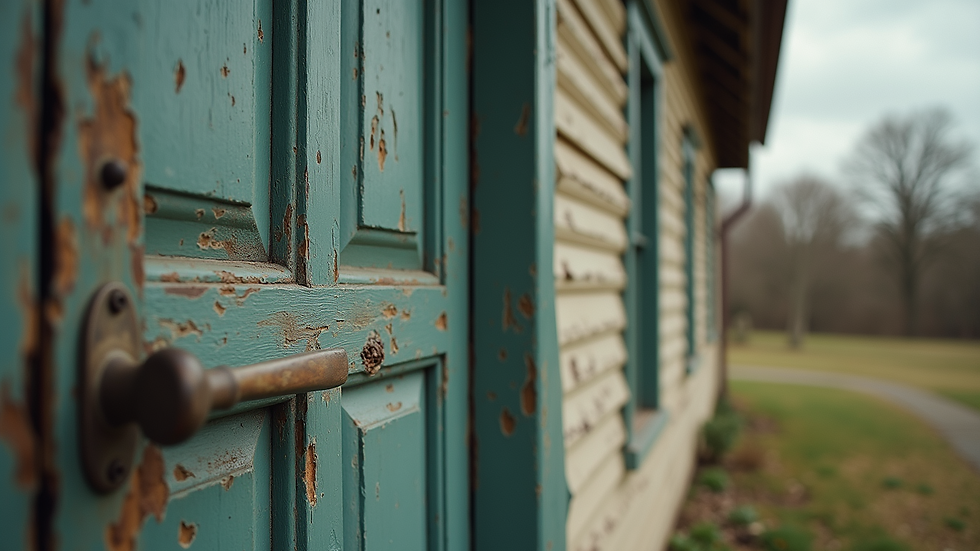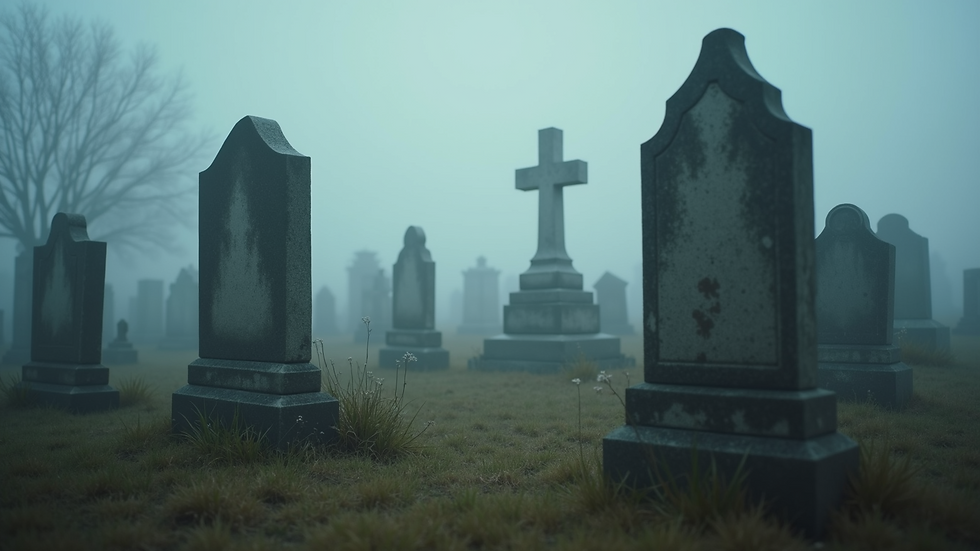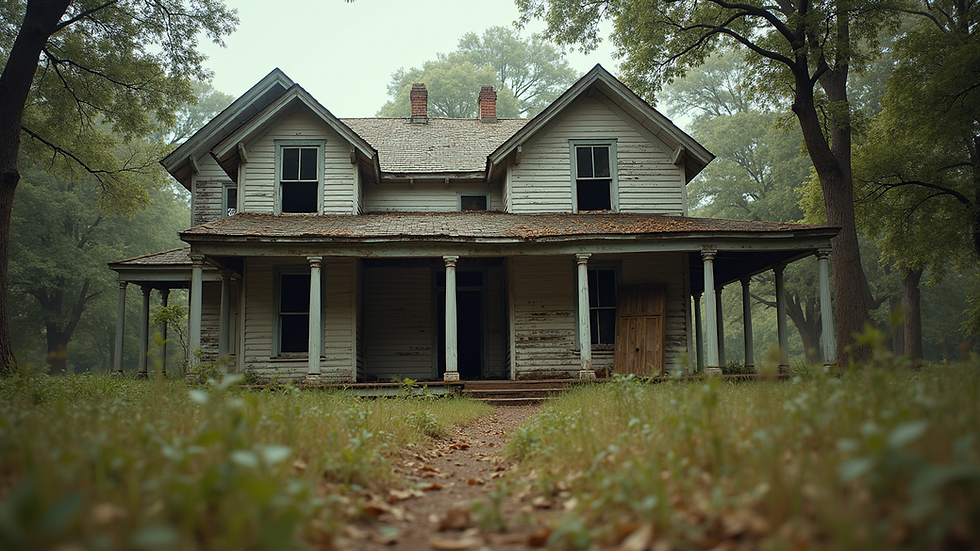Unveiling the Core Southern Gothic Themes
- Marc Wisdom
- 21 hours ago
- 4 min read
Southern literature holds a unique place in American storytelling, rich with complex characters, haunting settings, and deep cultural roots. Among its many styles, Southern Gothic stands out for its eerie atmosphere and exploration of the darker sides of the South. This genre delves into themes that reveal the contradictions and struggles within Southern society. Understanding these themes helps readers appreciate the depth and nuance of Southern Gothic works.
Exploring Themes in Southern Literature
Southern literature often reflects the history, culture, and social dynamics of the American South. It captures the region’s beauty and its troubled past, including issues like racial tension, poverty, and decay. The themes in southern literature frequently revolve around:
Decay and Ruin: Physical and moral decay are common motifs, symbolizing the decline of old Southern aristocracy and traditional values.
Family and Tradition: Stories often focus on family legacies, generational conflicts, and the weight of tradition.
Race and Social Injustice: The legacy of slavery and segregation deeply influences character interactions and plotlines.
Religion and Morality: Southern literature frequently explores religious fervor and moral dilemmas.
Isolation and Alienation: Characters may feel disconnected from society or trapped by their circumstances.
These themes create a rich tapestry that reflects the complexity of Southern identity and history.

What is Southern Gothic fiction characterized by?
Southern Gothic fiction is a subgenre of Southern literature that emphasizes the grotesque, the mysterious, and the macabre. It uses supernatural elements and dark humor to explore social issues and human psychology. Key characteristics include:
Grotesque Characters: Often eccentric or physically deformed, these characters reveal hidden truths about society.
Decayed Settings: Dilapidated plantations, abandoned towns, and eerie landscapes set the tone.
Themes of Madness and Violence: Mental illness, crime, and family secrets are common plot drivers.
Supernatural Elements: Ghosts, hauntings, and unexplained phenomena add to the unsettling atmosphere.
Moral Ambiguity: Characters often face ethical dilemmas without clear right or wrong answers.
These elements combine to create stories that are both haunting and thought-provoking, challenging readers to confront uncomfortable realities.

Key Southern Gothic Themes and Their Significance
Southern Gothic themes often serve as metaphors for broader social and psychological issues. Here are some of the most prominent themes and their meanings:
1. Decay and Ruin
Decay is not just physical but symbolic of moral and social decline. The crumbling mansions and dying towns represent the fall of the old South and its outdated values. This theme encourages reflection on change and the consequences of clinging to the past.
2. Alienation and Isolation
Characters in Southern Gothic stories frequently experience profound loneliness or estrangement. This isolation can be emotional, social, or physical, highlighting the human need for connection and the pain of exclusion.
3. The Grotesque and the Abnormal
The use of grotesque characters and situations exposes the hidden darkness within individuals and communities. These elements challenge conventional ideas of beauty and normality, forcing readers to confront uncomfortable truths.
4. Violence and Trauma
Violence, both physical and psychological, is a recurring theme. It often stems from historical injustices, family conflicts, or personal demons. This theme underscores the lasting impact of trauma on individuals and society.
5. The Supernatural and the Uncanny
Ghosts, hauntings, and other supernatural elements symbolize unresolved issues and the persistence of the past. They create an eerie atmosphere that blurs the line between reality and the unknown.
6. Social Critique
Southern Gothic stories often critique social structures, including racism, classism, and patriarchy. By exposing hypocrisy and injustice, these narratives encourage readers to question societal norms.
Understanding these themes provides insight into the complex world of Southern Gothic fiction and its enduring appeal.

How to Identify Southern Gothic Themes in Literature
Recognizing southern gothic themes in literature involves looking for specific elements and motifs. Here are practical tips to help identify them:
Look for Setting Details
Settings are often decayed or eerie, such as abandoned plantations, swamps, or small towns with a dark history.
Analyze Character Traits
Characters may be flawed, eccentric, or physically unusual. Their behavior often reveals deeper social or psychological issues.
Notice the Mood and Tone
The atmosphere is usually dark, mysterious, or unsettling, with a sense of impending doom or hidden secrets.
Identify Social Issues
Themes of race, class, and family conflict are common. The story may critique social norms or expose injustices.
Watch for Supernatural Elements
Ghosts, hauntings, or unexplained phenomena often appear, adding layers of meaning.
Examine Moral Complexity
Characters face ambiguous ethical choices, reflecting the complexity of human nature.
By applying these criteria, readers can deepen their understanding and appreciation of Southern Gothic works.
Why Southern Gothic Themes Remain Relevant Today
Southern Gothic themes continue to resonate because they address universal human experiences and social issues. Here’s why they remain important:
Reflection on History
They help us confront the legacy of the South’s troubled past, including racism and inequality.
Exploration of Human Nature
Themes of alienation, madness, and morality speak to fundamental aspects of the human condition.
Cultural Identity
Southern Gothic stories preserve and question Southern culture, encouraging dialogue and understanding.
Literary Innovation
The genre’s blend of realism, horror, and social critique inspires writers and readers alike.
Emotional Impact
The haunting atmosphere and complex characters evoke strong emotional responses, making the stories memorable.
For anyone interested in American literature or cultural studies, exploring southern gothic themes offers valuable insights and a richer reading experience.
For a deeper dive into the nuances of southern gothic themes, exploring this resource can provide additional perspectives and examples.
Southern Gothic literature invites readers into a world where beauty and horror coexist, where the past haunts the present, and where human flaws are laid bare. By understanding its core themes, we gain a greater appreciation for this powerful and enduring genre.



Comments